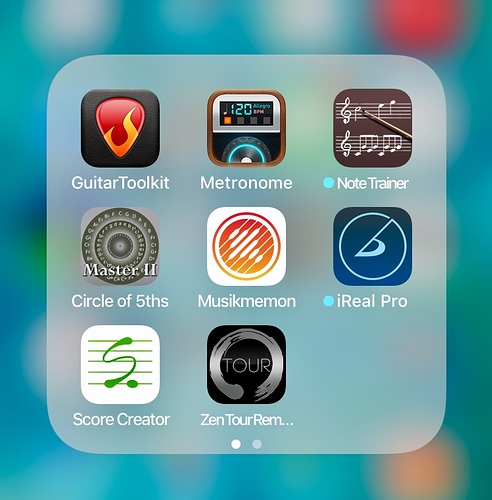As the title says, I’d like to talk about general polyexpressive instrument practice in this thread.
There are obviously a lot of ways to learn popular instruments like the piano and the guitar and while many of our polyexpressive devices follow similar music theory concepts and are based on key or string-like layouts with semi-tone steps, they of course offer a new and almost boundless form of musical expression. This can be very daunting.
For a beginner with maybe just some basic theory knowledge and piano/guitar playing skills (like me), I see three parts in learning a polyexpressive instrument:
1: Music Theory
This is something one can easily start to learn, even when away from the instrument. Scales, Modes, Chords, Circle of Fifths, Harmony, etc. are all well described in plenty of online articles, videos and books. Although it is often a rather dry topic, I still find it essential not just for understanding important musical concepts, but also for getting a feeling for your instrument’s layout in a musical context.
2: Play Style
Polyexpressive instruments come in many shapes and sizes and can sometimes even be further configured by the user for different play styles. Even seemingly simple things, like changing your playing posture from sitting down in front of the instrument to standing up with it hanging around your neck, can dramatically change the way you interact with it. Adding a breath sensor, pedals and MIDI devices, or even altering the layout itself, makes things even more complex and possibly overwhelming for the beginner. As usual, it is suggested to start slow, either with a default configuration or one that feels good and stick to that, until a certain level of proficiency is reached and one may be able to better judge the implications of a configuration change.
3: Sound Design
Historically, as far as I understand, instruments were often designed to achieve a certain sound, with a human interface (keys, strings, etc.) built around that as good as it was possible. You physically could not play Contrabass sounds on a Violin or even crazier, on a Piccolo Flute. Those days are behind us and our polyexpressive instruments can play any kind of sound imaginable, with a great amount of human “feeling” or “expression”. This overkill of possibilities and the process of designing a sound for an interface (and not the other way around, as it was done historically), can be a huge challenge for the musician and I feel like it’s a reason why people with a background in computer sciences and modular synthesis are drawn to polyexpressive instruments. It’s certainly a nerdy topic and the instrument hardware is often used in combination with complex music software 
But how do we get better at all of this now?
I feel like the first important step, even before choosing an instrument, is to figure out what you want to do and play with it. If it’s just some experimental polyphonic pitch sliding in the background of a larger musical piece, this might be easier and cheaper to achieve, than playing a full solo performance on the instrument.
My personal goal is to learn how to play, and hopefully also improvise, music with my two hands again, after years of modular synth music without much of expressive, or even human, interfacing at all. I’ve had roughly four years of classical piano training as a small child, from which I only remember brief music theory. My physical skills, especially playing with two hands at the same time, are pretty much gone. After receiving the Linnstrument, I read a lot of music theory and practiced playing various scales and chord progressions with both hands, while also using a vast amount of iPad MPE instrument apps. It was frustrating … too unstructured and way too much what I wanted to learn all at once. I took a break after that and then sat down with just a simple sound source and only polyphonic pitch bend as an added expressive input (so no after touch and Y axis / timbre). I chose a scale/mode other than C Major/Ionian for melody play with the right hand and started building two-finger chords with the left, while listening to a click track or a simple beat. This feels a lot better, although also glacially slow, compared to my previous attempt. My problem is that I don’t see “the pattern” or scale on the instrument yet, if I’m not playing the white (lit) or black (unlit) keys only. I could of course just configure it to light up the notes of the scale I’m playing, but I feel that this is too easy and I wouldn’t learn anything. So, I will try to familiarize myself slowly with one scale/mode at a time, while trying to improvise melody and chords, which will hopefully get myself to where I want in time.
Regarding sound design, I decided to limit myself to the Audiothingies Micromonsta MPE synth for now, starting with very very simple patches, which lend themselves to polyphonic play and pitch bend. It reminds me a little of my time with the MicroKorg, which was my first hardware synth. Back then, I would play/record stuff with it for an afternoon and then another time just spend a few hours designing sounds without really playing much. This was fun and offered a bit of variety in my interaction with the device.
Alright, now how about you? What are your approaches when it comes to learning your polyexpressive instrument of choice, or advancing your skills as an already proficient player?


 .
.
